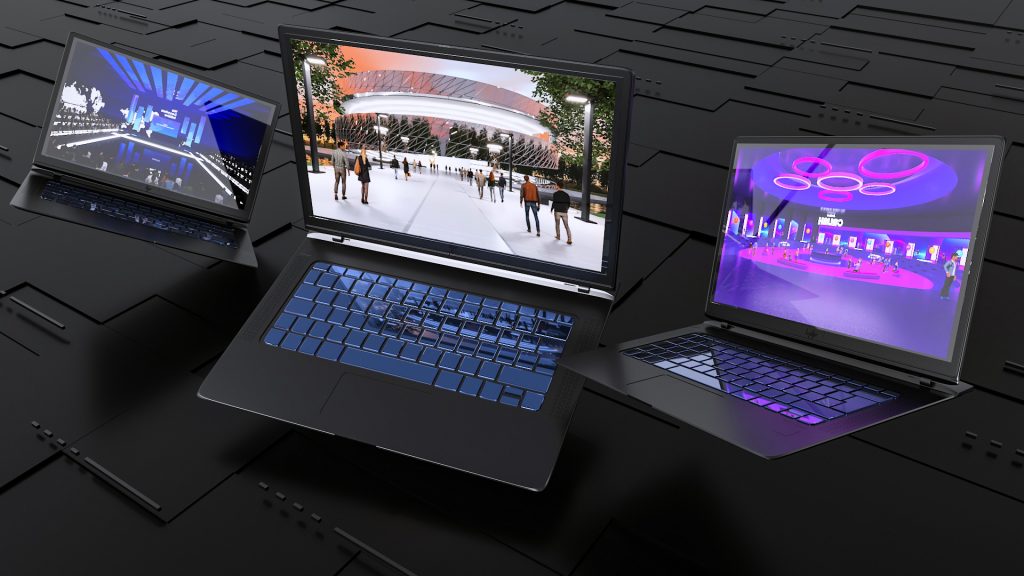
3D visualization:
3D rendering is undoubtedly one of the most critical aspects of the 3D animation process, while not being the most glamorous. Without rendering, the lifelike pictures we’ve come to expect from the best 3D animation would appear pixelated, unnatural, and have poor interaction with their surroundings.
If your firm has to communicate complicated facts and concepts, 3D rendered visual content can help present this information in a precise, elegant, and cost-effective manner. Using a technology that provides 3D rendered pictures can enhance the appearance of your items while also emphasising their benefits and capabilities – all while providing a premium user experience.
Read on to learn about 3D rendering, how it works, and where it may be used.
What is 3D visualization?
3D rendering is the process of converting three-dimensional information into two-dimensional images. The approach can be used for a variety of images, from non-realistic to incredibly lifelike designs that are difficult to distinguish from real photographs.
It’s a complicated process, but the quality of 3D rendering has increased dramatically over time. In its early phases, only big-budget film studios could afford to use the technology, such as Lord of the Rings. Fast forward to now, and advancements in rendering technology have made it available to organizations of all sizes.
How does 3D visualization work?
3D rendering is a combination of software, strategy, and artistry, but in its most basic form, it’s akin to photography: rendering software creates a picture of the image you’re attempting to capture. However, the true purpose of 3D rendering is to capture how light strikes an object. Digital lighting is essential for producing realistic and detailed renders. As with any creative form, practice makes perfect, and it takes time to gain the experience required to produce a finished piece that appeals to viewers.
What does 3D visualization involve?
3D modelling – the rendering process begins with creating a digital model of an object or scene and representing each item’s surface with a mathematical expression.
Lighting – 3D rendering software designed to produce natural or professional lighting. Lighting effects are developed within 3D modelling software to create the appearance that the image is three-dimensional.
Texturing- is layering flat pictures onto a model to provide colour and detail. This phase is critical to photorealistic rendering.
Rendering- is the act of generating a picture. The 3D model is transformed into a high-resolution image, which may subsequently be used to create many types of visual content.
After rendering is completed, the image must be tweaked to improve its appearance. It could include cleaning the lighting, shadows, texturing, or conducting another editing procedure like adding contrast, which can serve to make it more eye-catching.
How long does 3D rendering take?
The time required to create a 3D rendered image varies according to the project’s specifications. The following scenarios should give you a better understanding of how long a project may take.
Scenario 1: 3D rendered images for a catalogue
Let’s imagine you’re a B2C company trying to improve your eCommerce photos. You may consider using 3D rendering to create lifelike photos of your complete catalogue, but you may be turned off by the thought that it will take a long time. But would you be surprised to find that some brands have created a million high-resolution, lifelike graphics in a single weekend? Replacing traditional pictures with 3D produced graphics is far faster than the previous process, while still producing stunning visuals that attract buyers.
Scenario 2: Product customization with 3D visuals.
With 3D rendering, you can let your customers personalize their orders in real time. They can use specific software on your website to explore different colors and features and create a version of your product that meets their needs.
Scenario 3: Create original images using 3D design and modeling
The first two scenarios are pretty simple to fulfil. However, if you don’t, the rendering process will take longer. Once you’ve created the first model, you may easily alter it to match your needs, saving you time in the future.
Ways to use 3D visualization
3D visualization allows brands to express rich and complicated visual information, which is a valuable type of content in many industries. Beyond simply the entertainment sector, the following are gaining popularity:
- Retail – for showcasing the products on offer.
- Real Estate – providing 3D virtual tours of properties.
- Architecture and Automotive Design – to develop a model that makes it easier to see what the final product will look like. This is most often used to highlight any issues or oversights and mitigate risks.
- Engineering – creating technical illustrations of proposed projects.
- Product Design – developing different models of proposed new products.
- Medical Imaging – to visualize pharmaceutical modes of action in the body.
- Aeronautics – to demonstrate and simulate airflow and energy consumption.
3D rendering is still in its early phases, and it will continue to evolve as more businesses and brands can afford to use the technology. Once technology becomes more widely used, 3D rendering will speed up operations, give a cost-effective communication solution, and create a stunning visual picture of work in progress.
3D visualization simplifies life for numerous businesses.
3D visualization enables brands and consumers to enhance their lives. Enhancing eCommerce images has resulted in considerable growth and consumer happiness for these brands. And, as a low-cost method for raising the appeal of visual material, your ROI will undoubtedly be positive.
Contact us to learn more about how Thedigitalants a London based 3D design studio, can help you integrate 3d creative services in your B2B marketing strategy.
